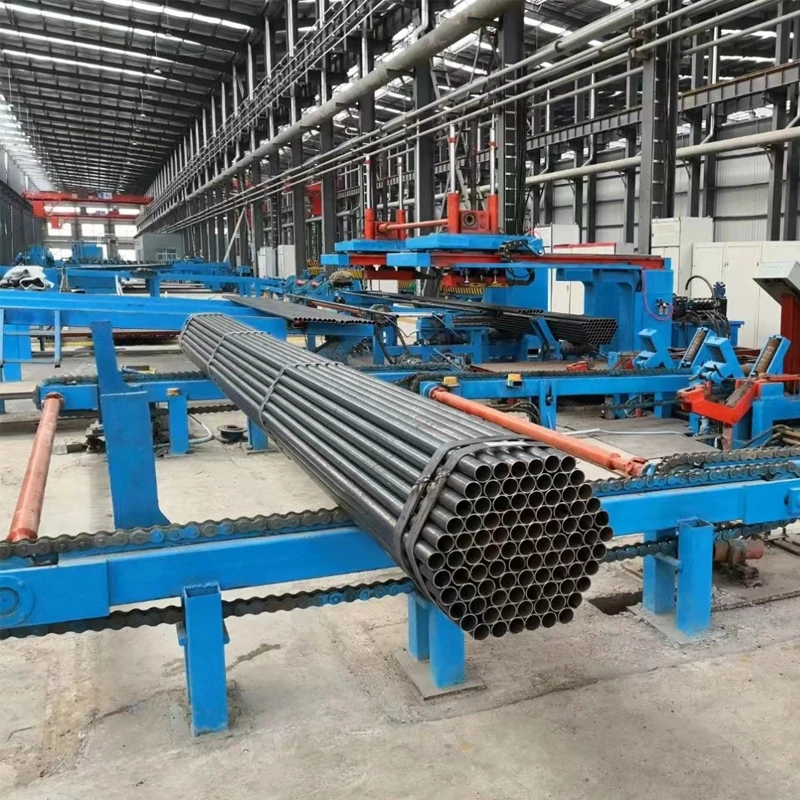roof sheet roll forming machine
Understanding Roof Sheet Roll Forming Machines
In today's construction industry, efficiency and precision are paramount. One of the technological innovations that have transformed roofing solutions over recent years is the roof sheet roll forming machine. This machine is designed to produce high-quality roof sheets with varying designs and specifications, catering to the needs of both residential and commercial projects.
What is a Roof Sheet Roll Forming Machine?
A roof sheet roll forming machine is an industrial device used to create metal sheets that will eventually serve as roofing material. The process involves feeding flat metal strips, typically made of galvanized steel or aluminum, into the machine, which then shapes them into specific profiles through a series of rollers. These profiles can vary widely, including corrugated, trapezoidal, and standing seam designs, allowing for customization based on specific project requirements.
How Does It Work?
The operation of a roof sheet roll forming machine can be broken down into several key steps
1. Material Feeding The process begins with the loading of metal coils into the machine. The coil is unwound and fed through a pre-forming area. 2. Roll Forming As the metal sheet moves through the machine, it passes through multiple sets of rollers. Each roller gradually shapes the metal, bending it into the desired profile. The precision of this process ensures uniformity and strength in the final product.
3. Cutting Once the metal sheet has been formed into the desired profile, it is cut to the required length by an automated cutting mechanism. This ensures that each sheet produced meets the specifications outlined by the customer.
4. Collection Finally, the finished roof sheets are collected and prepared for shipment or installation. Many machines include stacking systems to help streamline this process.
Benefits of Using Roof Sheet Roll Forming Machines
The incorporation of roll forming machines into manufacturing processes offers several advantages
roof sheet roll forming machine

- Efficiency These machines can operate continuously, producing large quantities of roof sheets in a relatively short amount of time. This increased output can significantly reduce labor costs and project timelines.
- Quality Control The precision of the roll forming process ensures that each sheet produced meets stringent quality standards. This consistency reduces the likelihood of defects and improves the overall durability of roofing systems.
- Customization Roof sheet roll forming machines can be easily adjusted to create different profiles and sizes. This flexibility allows manufacturers to respond quickly to varying customer demands and design specifications.
- Material Efficiency The process minimizes waste by utilizing the metal coils efficiently, making it an environmentally friendly option for roofing material production.
Applications of Roof Sheets
Roof sheets produced by roll forming machines find applications across various sectors, including residential, commercial, and industrial construction. They are used in
- Residential Buildings Roof sheets are a popular choice for homes because of their aesthetic appeal and durability.
- Commercial Facilities Many businesses utilize roll-formed roof sheets for warehouses, retail spaces, and other commercial buildings, where long-lasting and low-maintenance roofing solutions are crucial.
- Agricultural Structures Farmers and agricultural businesses often use these roof sheets for barns and storage facilities due to their strength and resistance to harsh weather conditions.
Conclusion
The roof sheet roll forming machine has become an indispensable tool in modern construction, offering efficiency, precision, and flexibility. As the demand for high-quality roofing materials continues to grow, the role of these machines will likely expand further, shaping the future of the roofing industry. Whether you're a builder, architect, or homeowner, understanding the benefits and workings of roof sheet roll forming machines can help you make informed decisions in your roofing projects.
-
High Frequency Straight Seam Welded Pipe Production Line-BzZhou Xinghua Machinery Equipment Manufacturing Co., LTD.|line pipe steel&welded gas pipeNewsJul.30,2025
-
High Frequency Straight Seam Welded Pipe Production Line-BzZhou Xinghua Machinery Equipment Manufacturing Co., LTD.|High Precision&Automated SolutionsNewsJul.30,2025
-
High Frequency Straight Seam Welded Pipe Production Line - BzZhou Xinghua Machinery Equipment Manufacturing Co., Ltd.NewsJul.30,2025
-
High Frequency Straight Seam Welded Pipe Production Line-BzZhou Xinghua Machinery Equipment Manufacturing Co., LTD.|Precision Welding, High EfficiencyNewsJul.30,2025
-
High Frequency Straight Seam Welded Pipe Production Line|BzZhou Xinghua|Precision Welding&EfficiencyNewsJul.30,2025
-
High Frequency Straight Seam Welded Pipe Production Line - BzZhou Xinghua|Precision Engineering&EfficiencyNewsJul.30,2025


